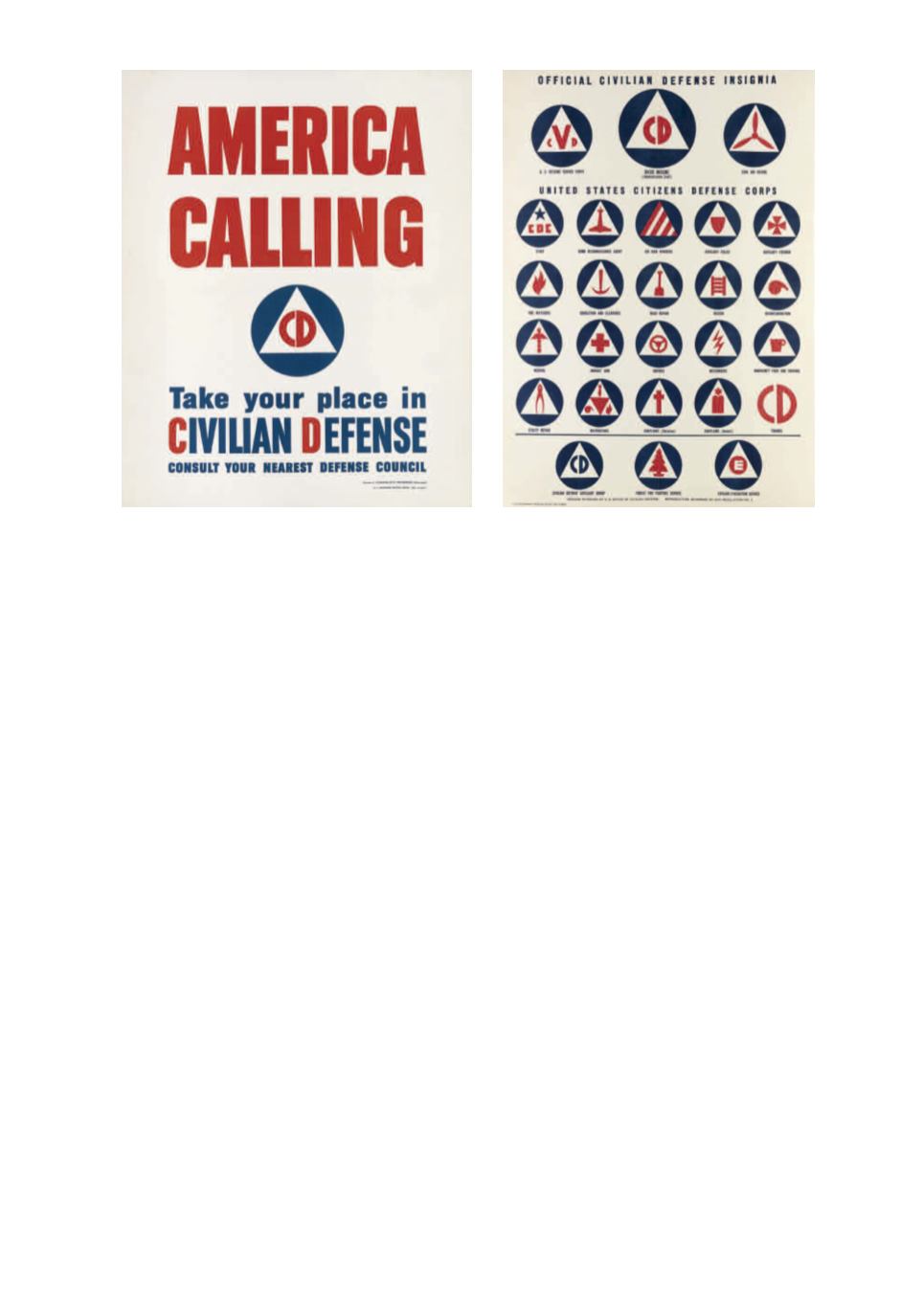

DESIGNER UNKNOWN
219
●
DRIVE SLOWER IN HOT WEATHER. 1942.
39
1
/
2
x28
1
/
2
inches, 100
1
/
4
x72
1
/
2
cm. U.S. Government Printing Office, Washington, D.C.
Condition A: minor restoration along unobtrusive vertical and horizontal folds; minor creases at edges.
[400/600]
ATTRIBUTED TO CHARLES COINER (1898-1989)
220
●
AMERICA CALLING / TAKE YOUR PLACE IN CIVILIAN DEFENSE. 1941.
27
1
/
2
x22 inches, 70x56 cm. U.S. Government Printing Office, Washington, D.C.
Condition A: minor restoration at top edge and along unobtrusive horizontal fold.
Coiner learned his craft during a six-year stint at an advertising agency in Chicago. In 1924, he moved
to Philadelphia, where he joined the art department at N.W. Ayer. He was a young, dashing figure in
the advertising world and he gained national recognition with the logo he designed for the NIRA, The
National Industrial Recovery Act. He became a key figure in the modern approach to advertising during
the late-1930s while working with the Container Corporation of America campaigns, for which he was
allowed to hire all of the avant-garde talents that he wanted. During the Second World War, he was
appointed as a consultant to the office of Emergency Management, where he continued hiring top
graphic designers to create propaganda aimed at the war industries, including the memorable
Production
poster by Jean Carlu (see lot 222). The Office of Civilian Defense was set up by President Franklin
Roosevelt on May 20, 1941, although Coiner is credited with having designed the logo in 1939.
[400/600]
CHARLES COINER (1898-1989)
221
●
OFFICIAL CIVILIAN DEFENSE INSIGNIA. 1942.
39
1
/
4
x28
1
/
4
inches, 99
3
/
4
x71
3
/
4
cm. U.S. Government Printing Office, Washington, D.C.
Condition A: minor creases at edges and along unobtrusive vertical and horizontal folds.
“Coiner’s visionary system of logo-like-symbols - effective in its logic, geometric simplicity, and
capacity for seemingly endless variation - anticipated universal pictogram and corporate identity
programs which would flourish in the 1960s” (Resnick p. 73). Resnick 43.
[800/1,200]
220
221
















